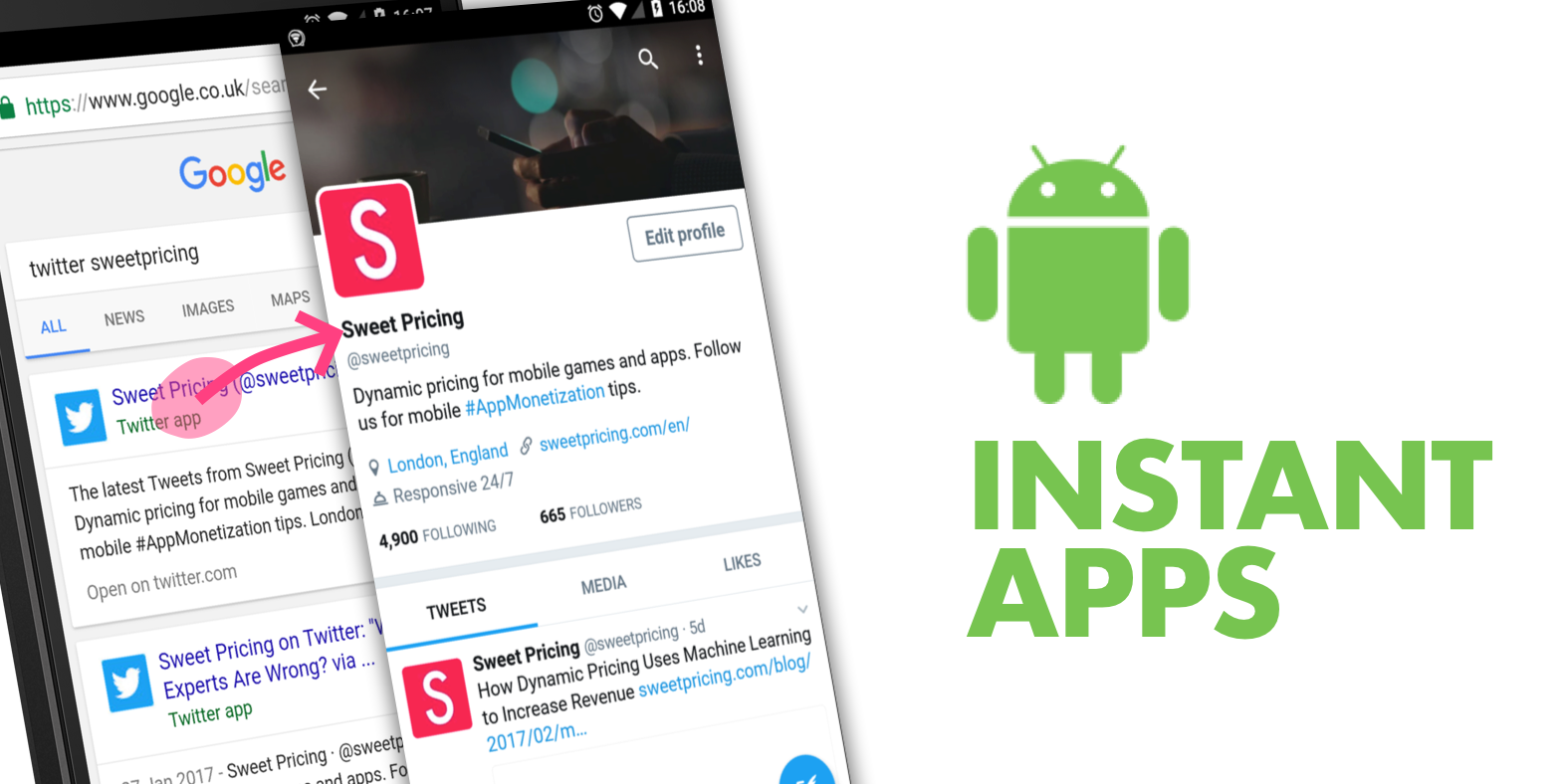Android Instant Apps close the gap between mobile apps and the mobile web. Google announced Instant Apps at I/O 2016 as a way to access content and features within mobile apps without installation. But this new technology threatens the future of the mobile web itself.
Mobile apps and the mobile web have offered totally different user experiences up to now. Content in the form of web pages has been easy to access on the mobile web. But content within mobile apps has been difficult to deliver from Google Search and other websites.
Google first addressed the gap between mobile apps and the mobile web with app indexing and deep linking. Since 2014, app developers have been able to use app indexing to have their mobile app’s content show up in Google Search, alongside traditional web pages.
But app indexing has a major flaw. It requires the user to install the mobile app before they can view the content or use a particular app feature. For a popular mobile app, like Twitter, the deep linking strategy works perfectly. For a less popular app, such as the UK-based parking payments app RingGo, the experience falls apart.
Android Instant Apps
Google announced Android Instant Apps at I/O 2016. Instant Apps solve the ‘install problem’ by streaming the relevant parts of the application to the user just in time. This helps bridge the gap between the mobile apps experience and the mobile web experience.
With Instant Apps, the user only has to click on a Google deep-linked search result, swipe their phone on an NFC tag or scan a QR code. Google Play streams the relevant parts of the modular mobile app to the device, providing the user quick and easy access to an app’s content or features.
Instant Apps are not different from ordinary mobile apps. They are simply an additional feature that app developers can implement. Google will provide an Android SDK that enables the Instant App features in existing mobile apps, but it is likely to require some refactoring and modularization of an app’s existing codebase.
From January of this year, select mobile app developers are testing the new functionality. Apps like Buzzfeed, Wish and Periscope will be available in ‘Instant form’ to a small group of users. Google has said that the SDK will be generally available ‘in the coming months’.
The Future of the Mobile Web
The bimodal mobile experience, that of mobile apps and mobile web, has always been problematic. Up to now, people have fallen into ‘the future is apps‘ or ‘the future is web‘ camps. But the introduction of Instant Apps blurs the lines and raises a difficult question. What if the future of mobile is neither apps nor the web?
To some extent, it seems that Instant Apps is an attempt to put two disparate experiences on a path of convergence. Not only will it push web users to a native experience, it could potentially push app users to a just-in-time experience. Why would a user bother installing a mobile app if they can access a mobile app as and when needed?
One of the main concerns of app developers is user acquisition. But if Instant Apps are a stepping stone to a world of just-in-time experience, user acquisition and retention becomes even more difficult. In this scenario, app developers will need to fundamentally rethink their business strategy.
The risks to the mobile web are even greater. Google’s canonical Instant Apps example is a parking payment mobile app. Today, users have to either install a mobile app or use the mobile web to pay for their parking. In the Instant Apps world, a user does neither. They simply scan their device on an NFC tag to launch a streamed native mobile app. Instant Apps essentially act as a platform-specific version of the web.

